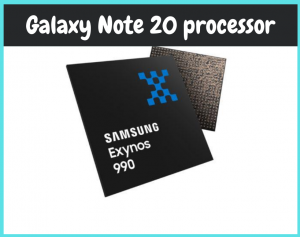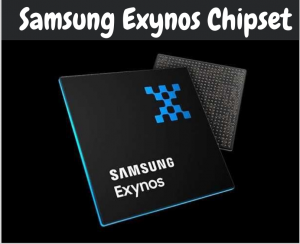Samsung Exynos chipset
What is a Samsung Exynos chipset?
Samsung Exynos chipset is among the few smartphone brands capable of producing its original processors, with Apples and Huawei being about the only big suppliers to do just that. This helps the company to produce processors that exactly match their needs while enabling them to save every few pennies potentially as well. The CPU spectrum from leading tool 5 G flagships to $100 smartphones can be contained with everything from the Samsung Exynos. And with that in view, it is created a guide to such SoCs. Samsung had been in the industry of processor production processes (SoCs) long before they launched the Exynos brand and began using their own Galaxy phones processors. The S3C44B0 was the very first SoC built by Samsung, predicated on the ARM7 CPU, it became accessible in 2000. The retail company Mattel used this 66MHz single-core SoC in their low-cost interactive player named Juice Box. This processor was also used by the Threat Hip top smartphones, that was influence the behaviour as the T-Mobile companion.

Figure 1. Samsung Exynos Chipset
What is the latest chipset in Samsung smartphones?
The Exynos 990, located in the Galaxy S20 community, is the new and biggest Exynos processor in 2020. This processor provides a quadra-cluster CPU configuration, just as we see with Qualcomm and Huawei’s HISilicon flagship mobile processors. That implies we have two custom-designed high-lift CPU cores, two medium – weight Cortex-A76 Core processors, and four Cortex-A55 modules to manage easy, uncomplicated activities. The Exynos 990 also packages a premier-level Arm Mali-G77 MP11 GPU, the dual-core machine-learning neural processing unit (NPU), as well as a 7 nm architecture. Other extensions of Exynos 990 involve 8 K audio, up to 108MP cameras, 120Hz refresh rate frequency assistance, and 5 G facility through the boxed modem. The modem follows both mm Wave and sub-6Ghz requirements and joins the 5 G connectivity of Qualcomm.
Samsung Exynos chipset 990.
The Samsung Exynos 990 is a high-end, smartphone, and tablet cell phone SoC. In 2020 it was revealed on the Samsung S20 line. Three groups of core processors are combined with specific architectures. For smartphone processors, the output of the CPU component is placed in the high-end category. Samsung Galaxy Note 20, Galaxy Note 20 +, and Galaxy Note 20 Ultra cell phones are set to announce at the Galaxy disassembled 2020 event on August 5th. The Samsung note 20 Ultra is the top-of-the-line smartphone in the line-up, and it is anticipated to be initiated with both an Exynos SoC and a Snapdragon CPU just like in the past. In the latest revelation, the Exynos variant of the Galaxy Note 20 Ultra was noticed on Geek bench but has allegedly been underperforming against its own Snapdragon equivalents. The Exynos 990 is indeed a high-end mobile Chipset for mobile phones and tablets. In early 2020 it was revealed on the Samsung S20 board. Three groups of core processors are combined with specific architectures. Two large customized M5 Samsung processors clock up to 2,73 GHz and offer performance level. There are also 2 extra ARM Cortex-A76 for learning outcomes and a clock up to 2.5 GHz. Finally, the third cluster consists of four tiny and power-efficient ARM-Cortex A55 CPUs timer at up to 2 GHz. According to DinamIQ, the various clusters will run concurrently. The built-in LTE device claims to support Cat.20/18 LTE-Advanced Pro (2000 Mbps archive, 210 Mbps upload). The embedded Graphics Card is an 11-core ARM Mali G77MP11. For mobile phone chipsets, the quality of the CPU portion is placed in the high-end segment. it provides a very great result in single threads on an equal level with both the Snapdragon 965 as well as older Apple A11. The multi-threaded quality is somewhat just below the fastest-actual mobile phone socs. It slots in the Kirin 990, above the earlier Snapdragon 855+.

Figure 2. Samsung Galaxy Note 20 Processor
990 vs Snapdragon 865.
The gap between both the Exynos 990 as well as Snapdragon 865 systems is not significant as compared with CPU and GPU productivity on its own, but there is still a gap between two UX and MEM test results that are impacted by the scheme. The Exynos 990’s UX and MEM quality lags next to that of the Snapdragon 865 variant with the same 120Hz refresh rate assistance and then the same processing mixture of 12 GB RAM and 128 GB storage. While Samsung has not really described why they are using both Qualcomm and their own Exynos design elements in their mobiles, we could even make some guesswork. Qualcomm has an important control over the CDMA norm, and the use of a Snapdragon processor is needed for Samsung to sell its smartphones on Verizon. Then why isn’t Samsung using the Snapdragon 865 everywhere nowadays? By trying to push its in-house alternative rather than having to pay Qualcomm, the company needs to stand to earn extra profit in international markets, so it utilizes Exynos memory chips in GSM-only marketplaces. The two projects have some variations, but let’s concentrate on the similarities. Both Exynos 990 and Snapdragon 865 are constructed on a 7 nm node. Exynos is produced on a 7 nm LPP procedure at Samsung factory, and Qualcomm’s layout is assembled on an N7P procedure at TSMC. Even though Samsung has made substantial benefits including its Exynos chipsets in the phone SoC section, its models are not exactly equal to what Qualcomm has to give the best. That was obviously the case in past years and also with the Galaxy S20 series issues remain unchanged by 2020. Let’s take a closer look at what is on sale with every processor before we all get underway. The Exynos 990 has a set of two cores: two high-performance Mongoose M5 cores at 2.73GHz, technology, in addition, A76 cores at 2.50GHz and four energy-efficient A55 cores at 2.0GHz, respectively. While the Snapdragon 865 has the newest cores: there is one specific A77 core operating at 2.84GHz, three A77 cores operating at 2.50GHz, and four A55 cores able to run at 1.80GHz. The Exynos 990 does have the Mali-G77 MP11 mostly on GPU end of view, with the MP11 specifying that 11 subsurface scattering cores are on. The Snapdragon 865 does have the Adreno 650, a restart of the Adreno 640 from last year. Over the last three years, Qualcomm has been the runaway winner in this region, so it’ll be fascinating to see whether the Mali-G77, with its latest Val hall technology, can stand its own against the Adreno 650.
Read more about this